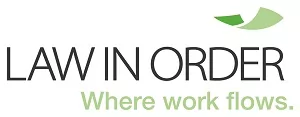Rising business demand in 2017 meant larger and more complex jobs.
We had been relying on a legacy solution for processing our data into Relativity. When we took on an enormous job involving a company splitting into two entities, we knew our existing processing solution was not equipped to handle a project of this magnitude.
"Our team was manually mapping data fields and managing multiple imports and exports," said Murali Baddula, Head of e-Discovery at Law In Order. "Handling multiple data footprints was becoming tedious, and our storage costs to manage these systems were adding up."
We had been considering Relativity Processing. This huge job — 8.5 TB of data with nearly 32 million documents — would be the perfect opportunity to put it to the test before full adoption.

Go Big or Go Home
Our client tasked us with analyzing its assets and identifying which documents belonged to the entity of the company that was sold off.
Rolf Behrens, Review Solutions Manager at Law In Order, strategised about the best way to get the data in front of review teams as quickly and accurately as possible.
"We were collecting and receiving continuous amounts of large data, so we couldn't just hit and go," Rolf explained. "With a broad collection of 32 million documents, we needed to cull junk data and only promote data relevant for review."
Law In Order partnered with the Relativity Customer Success team to get the 8.5 TB of case data imported into Relativity Processing.
Then, devising a plan of attack to navigate the enormous data set, the e-Discovery team started an early case assessment (ECA) workflow to promote reviewable documents to reviewers. By doing so, the team parsed out specific file types within personal storage files—like emails, calendar items, and contacts—and applied de-duplication to reduce the amount of data from the get-go.
Law In Order's prior solution involved loading data in phases, manually mapping fields, and continuously importing and exporting data, according to Murali.
"By the time our data was ready for review, we would have already quadrupled the data," Rolf said. "With Relativity, we can just point and shoot, and the data is ready for attorneys to start reviewing immediately."
Reduced by 75%
Using Relativity Processing and ECA reduced our overall data footprint by 75 percent with a 25 percent cost savings. In the second week of the project, Murali and Rolf had the following conversation over Skype:

"The project's results gave us the confidence we needed to adopt the entire Relativity platform for all our jobs," Murali said. "We can continue to deliver top quality results to our clients in a fraction of the time."

